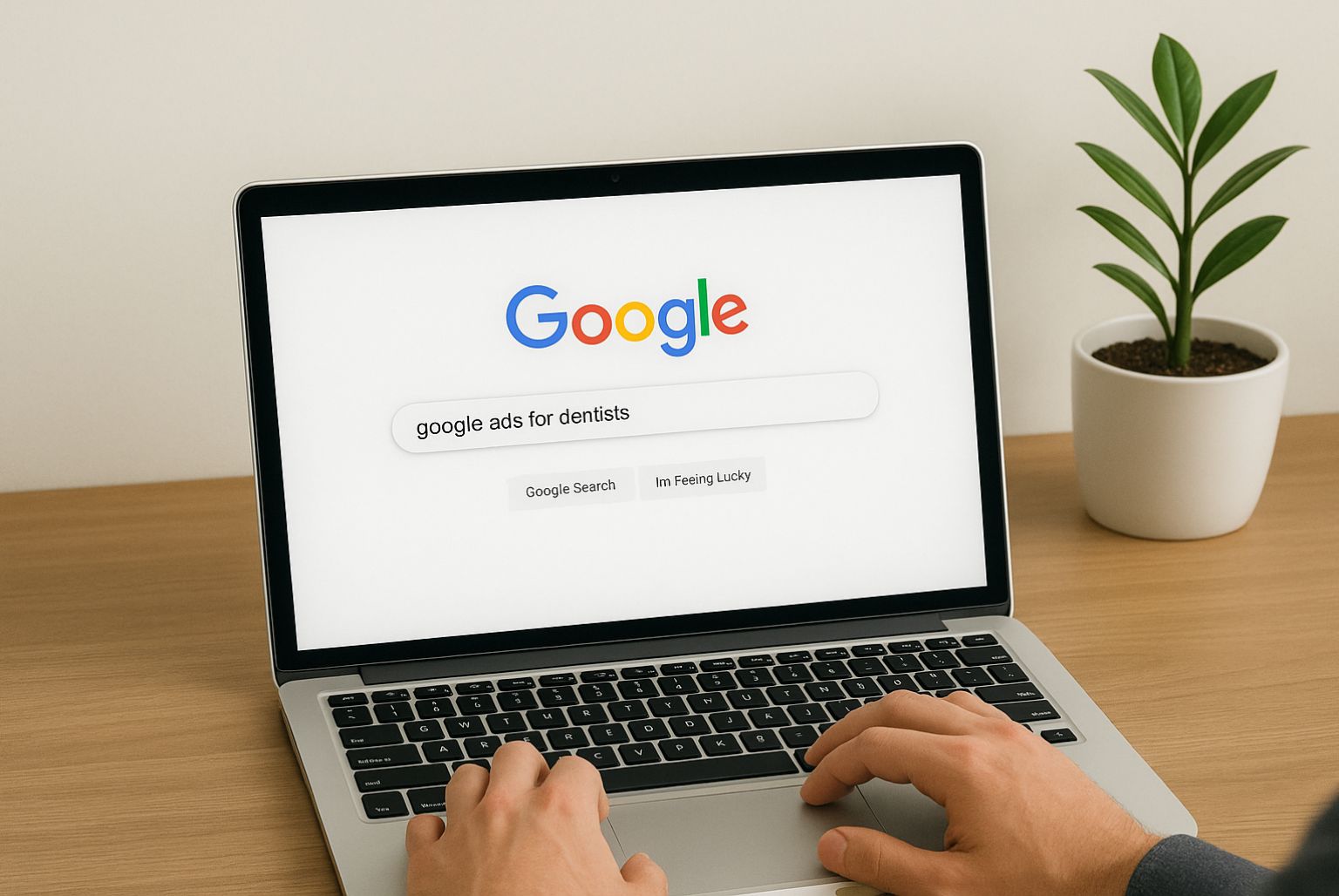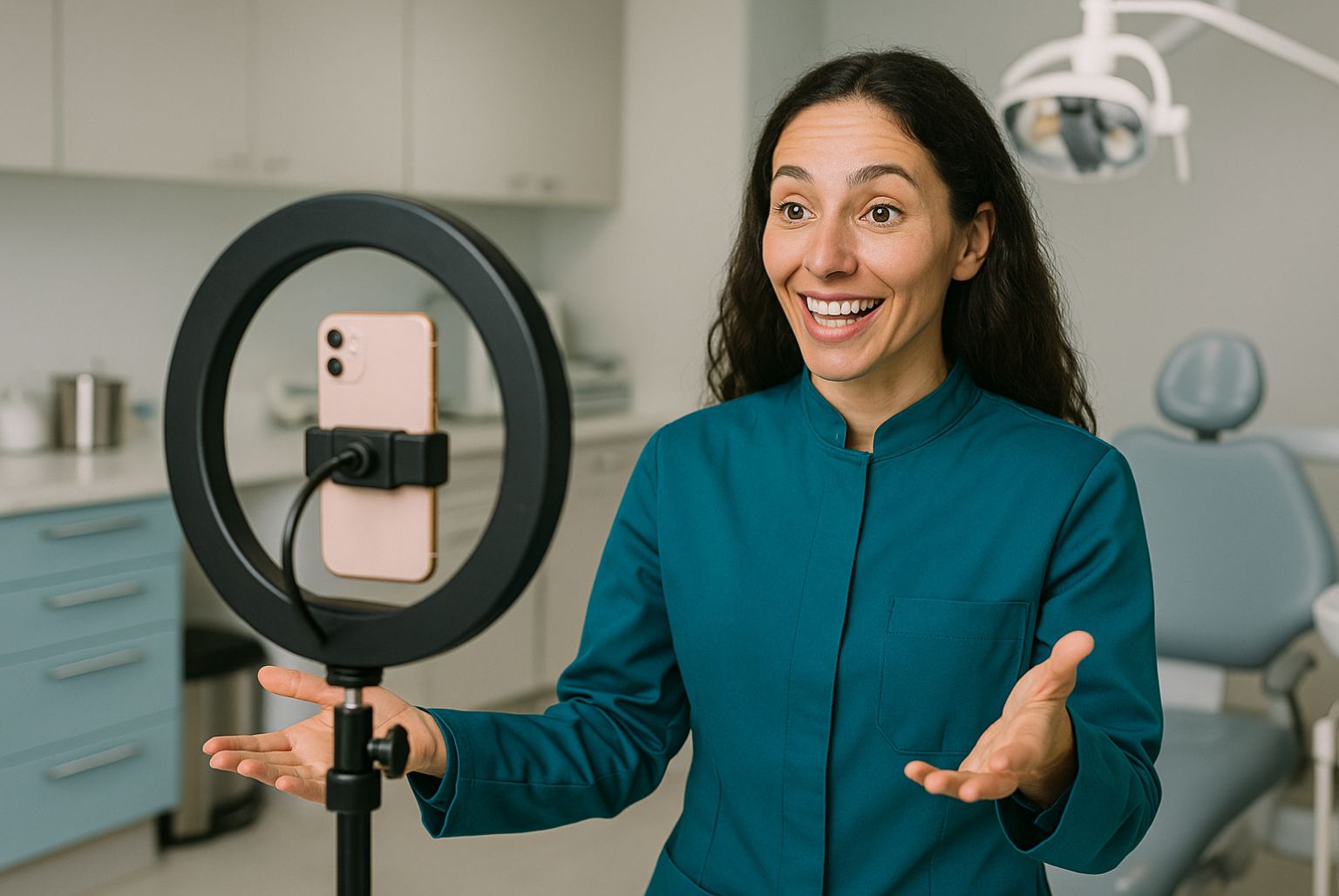You’ve set up Google Ads. You’re spending money every month. But the bookings? They’re… inconsistent. Or worse, non-existent.
Sound familiar?
Many dental clinics dabble in paid search hoping for a flood of new patients, only to end up frustrated by poor results and rising costs. If you’ve ever thought, “We tried Google Ads — it didn’t work,” you’re not alone.
But here’s the truth: Google Ads can be one of the most powerful patient acquisition tools available to dentists — when it’s done right.
Why Google Ads Fail for Most Dental Clinics
Let’s start with the hard truth: Google makes it easy to spend money, but not to spend it well.
The default settings in Google Ads are designed to maximise your spend, not your results. And unless your campaigns are tightly focused, you could be throwing hundreds (or thousands) of pounds at irrelevant clicks, unqualified leads, or people just looking for NHS treatment.
Here’s where things usually go wrong:
- Broad keywords: If you’re bidding on “dentist” without geographic targeting or match types, you’re inviting wasted clicks.
- No negative keywords: Without exclusions like “NHS,” “free,” or “training,” you’re paying for the wrong audience.
- Poor ad copy: Generic, keyword-stuffed headlines don’t stand out in a competitive space.
- Weak landing pages: Sending traffic to your homepage — instead of a focused, service-specific page — kills conversions.
- No tracking: If you can’t see which ads are generating calls or bookings, how can you optimise?
How to Make Google Ads Actually Work for Your Practice
Done properly, Google Ads lets you appear at the exact moment someone searches for treatments like Invisalign, dental implants, or emergency dental care in your area. The intent is there — you just need to match it.
Here’s what high-performing campaigns do differently:
1. Use Location-Based Keywords and Targeting
Target phrases like:
- “Private dentist Nottingham”
- “Teeth whitening Derby”
- “Emergency dentist near me”
And set your ads to show only within a specific radius of your clinic. You don’t want clicks from Manchester if you’re based in Milton Keynes.
2. Be Specific With Match Types
Use phrase match and exact match instead of broad match. That way, you appear for searches with real intent — not vague or irrelevant queries.
Example:
- Broad match: dentist (shows for “dental nurse training”)
- Phrase match: “private dentist Nottingham” (shows for close variations)
- Exact match: [dentist Nottingham city centre] (shows only that search)
3. Write Ads That Speak to Patient Needs
Your ad copy should reflect real concerns and goals, not just services.
Instead of:
“Experienced Cosmetic Dentists | Teeth Whitening & Implants”
Try:
“Straighten Your Smile in 6 Months | Book a Free Invisalign Consultation Today”
Focus on benefits, not just features.
4. Send Traffic to Optimised Landing Pages
Sending someone to your homepage is like dropping them in the middle of a town with no signs.
Create dedicated landing pages for each campaign. For example:
- Invisalign ad → Invisalign page with before/afters, reviews, FAQs, and booking button
- Emergency dentist ad → Page with urgent appointment info, map, and contact form
The clearer and more relevant the page, the higher your conversion rate — and the lower your cost-per-click (CPC).
5. Track Everything That Matters
Set up:
- Call tracking
- Form submission tracking
- Click-to-call events on mobile
- Conversion tracking in Google Ads and Google Analytics
Without this, you’re flying blind. With it, you can see exactly which ads, keywords, and landing pages are generating patients — and which ones need cutting or tweaking.
What About Smart Campaigns and AI-Generated Ads?
Google’s Smart Campaigns sound tempting: “Let us do the work for you.” But the reality? They rarely deliver good ROI for dental clinics.
Why?
- You lose control over where and how your ads show
- Budgets get spread too thin
- Ads are generic and uncompetitive
Yes, automation can help — but only when it’s built on top of a strong, human-led strategy. Google’s AI doesn’t understand your business like you do.
How Much Should Dentists Spend on Google Ads?
This is one of the most common questions we get.
There’s no one-size-fits-all answer, but here are some general benchmarks:
- Local lead gen campaigns (e.g. for teeth whitening or Invisalign): £500–£1,500/month
- High-competition treatments (e.g. implants, smile makeovers): £1,500–£3,000/month+
- Emergency or general dentistry: Can often see strong returns at £500–£1,000/month
The key is not just how much you spend — but how well it’s managed.
A well-managed £750 budget can outperform a £2,000 “set it and forget it” campaign.
How Long Until Google Ads Start Working?
In many cases, you’ll see leads within the first week. But optimisation is a process.
The first month is about:
- Gathering data
- Testing ad variations
- Adjusting keyword bids
- Identifying which landing pages convert best
By months 2–3, most clinics start to see consistent cost-per-lead performance and know where to double down.
Real Results: What Can You Expect?
With expert setup and ongoing optimisation, dental clinics often achieve:
- £20–£40 per qualified enquiry
- 10–20+ new leads per month, per campaign
- Strong ROI on high-value treatments like Invisalign and implants
- Greater visibility over competitors on Google
Even better — those results are trackable. You’ll know what’s working, and why.
Tired of Wasted Clicks and Low Results? Let’s Fix That
Perhaps you’ve been burned by a bad agency. Or you tried Google Ads yourself and didn’t see results. That doesn’t mean paid search can’t work — it just means it hasn’t been done properly yet.
At Cosmetic Digital, we manage Google Ads for dental clinics every day. We know the keywords that convert, the ads that perform, and the landing page tweaks that make all the difference.
We don’t do generic. We do strategic, measurable, and ROI-focused advertising.




